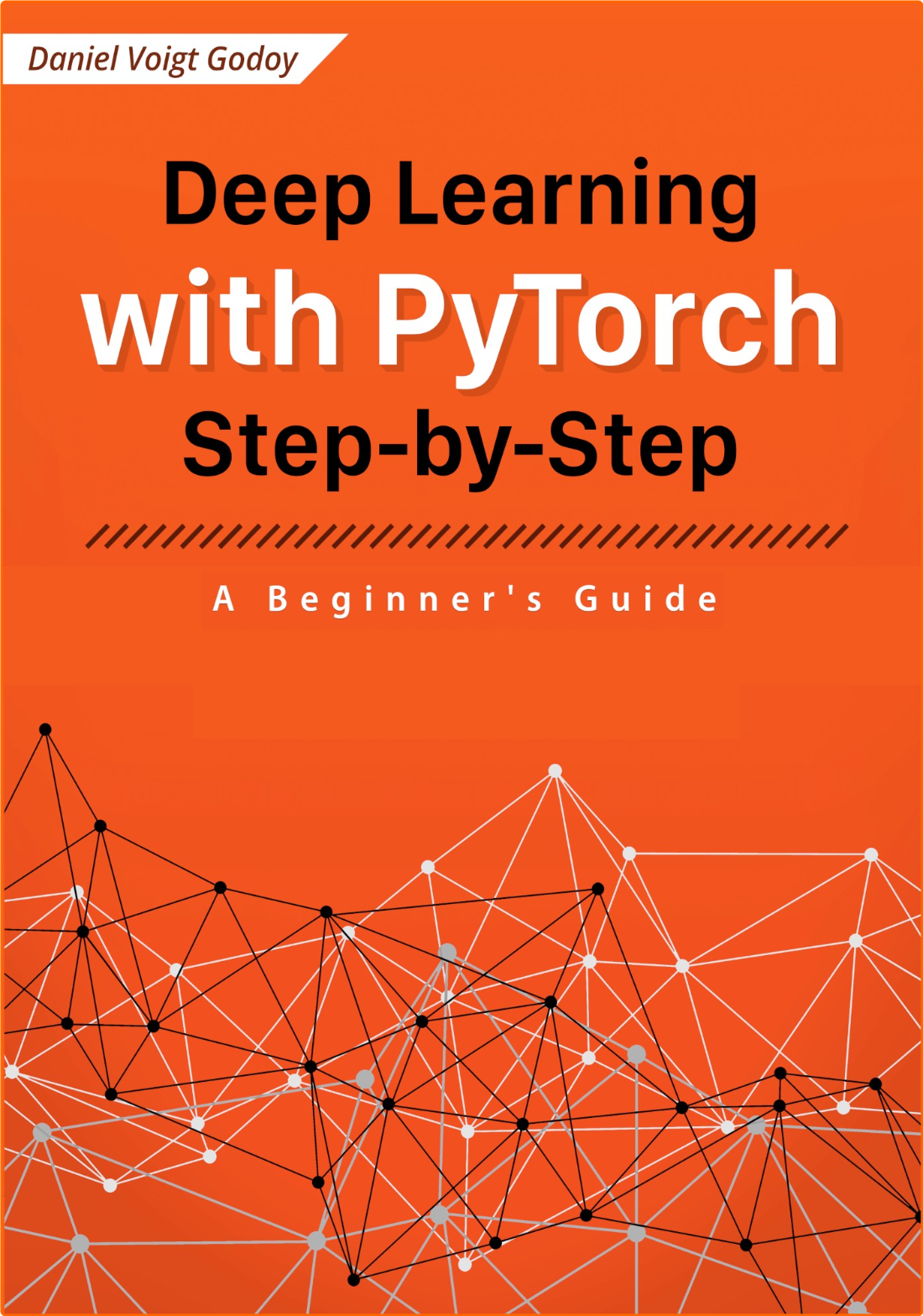- Témaindító
- #1
- Csatlakozás
- 2023.06.08.
- Üzenetek
- 31,139
- Reakció pontszám
- 202
- Díjak
- 6
- Kor
- 36

English | 2024 | ISBN: NA | 1047 Pages | PDF | 34 MB
Deep Learning with PyTorch Step-by-Step: A Beginner's Guide (Daniel Voigt Godoy)
UPDATE (August, 25th, 2024) - Revised for PyTorch 2.x!
Revised for PyTorch 2.x! In 2019, I published a PyTorch tutorial on Towards Data Science and I was amazed by the reaction from the readers! Their feedback motivated me to write this book to help beginners start their journey into Deep Learning and PyTorch. I hope you enjoy reading this book as much as I enjoy writing it.
The latest revised edition (v1.2) was published today to address changes in PyTorch, Torchvision, and other libraries. The chapters most affected were Chapter 4 (in Part II, Computer Vision) and Chapter 11 (in Part IV, NLP).
UPDATE (July, 19th, 2022): The Spanish version of Part I, Fundamentals, was published today:https://leanpub.com/pytorch_ES
UPDATE (February 23rd, 2022): The paperback edition is available now (the book had to be split into 3
volumes for printing). For more details, please check pytorchstepbystep.com.
UPDATE (February 13th, 2022): The latest revised edition (v1.1.1) was published today to address small changes to Chapters 9 and 10 that weren't included in the previous revision.
UPDATE (January 23rd, 2022): The revised edition (v1.1) was published today - better graphics, improved formatting, larger page size (thus reducing page count from 1187 to 1045 pages - no content was removed!). If you already bought the book, you can download the new version at any time!
If you're looking for a book where you can learn about Deep Learning and PyTorch without having to spend hours deciphering cryptic text and code, and that's easy and enjoyable to read, this is it
The book covers from the basics of gradient descent all the way up to fine-tuning large NLP models (BERT and GPT-2) using HuggingFace. It is divided into four parts
Part I: Fundamentals (gradient descent, training linear and logistic regressions in PyTorch)
Part II: Computer Vision (deeper models and activation functions, convolutions, transfer learning, initialization schemes)
Part III: Sequences (RNN, GRU, LSTM, seq2seq models, attention, self-attention, transformers)
Part IV: Natural Language Processing (tokenization, embeddings, contextual word embeddings, ELMo, BERT, GPT-2)
This is not a typical book: most tutorials start with some nice and pretty image classification problem to illustrate how to use PyTorch. It may seem cool, but I believe it distracts you from the main goal: how PyTorch works? In this book, I present a structured, incremental, and from first principles approach to learn PyTorch (and get to the pretty image classification problem in due time).
Moreover, this is not a formal book in any way: I am writing this book as if I were having a conversation with you, the reader. I will ask you questions (and give you answers shortly afterward) and I will also make (silly) jokes.
My job here is to make you understand the topic, so I will avoid fancy mathematical notation as much as possible and spell it out in plain English.
In this book, I will guide you through the development of many models in PyTorch, showing you why PyTorch makes it much easier and more intuitive to build models in Python: autograd, dynamic computation graph, model classes and much, much more.
We will build, step-by-step, not only the models themselves but also your understanding as I show you both the reasoning behind the code and how to avoid some common pitfalls and errors along the way.
I wrote this book for beginners in general - not only PyTorch beginners. Every now and then I will spend some time explaining some fundamental concepts which I believe are key to have a proper understanding of what's going on in the code.
Maybe you already know well some of those concepts: if this is the case, you can simply skip them, since I've made those explanations as independent as possible from the rest of the content.

NitroFlare Link(s) (Premium Link)
Code:
⚠
A kód megtekintéséhez jelentkezz be.
Please log in to view the code.
Code:
⚠
A kód megtekintéséhez jelentkezz be.
Please log in to view the code.
